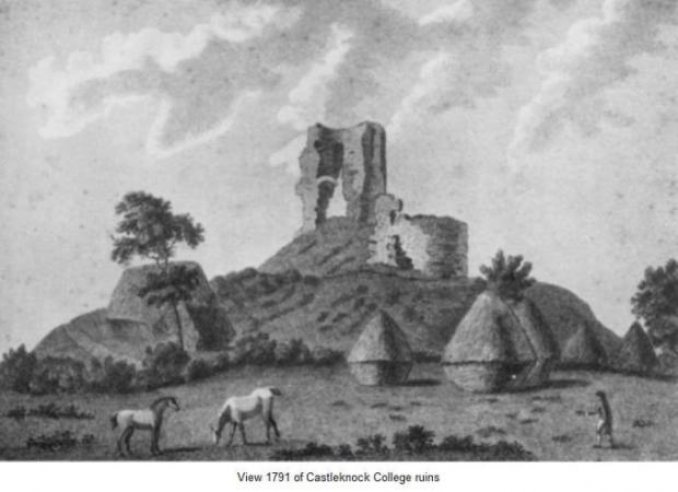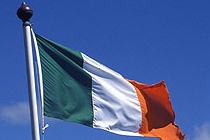Castleknock Castle - Caisleán Cnucha

Castleknock Castle (Irish: Caisleán Cnucha) is a ruined 12 century Norman castle. It located on the grounds of Castleknock College (Irish: Coláiste Caisleán Cnucha) which is in the suburb of Castleknock, Dublin, Ireland (Irish: Caisleán Cnucha, Baile Átha Cliath, Éire). The castle was founded by the Norman knight, Hugh Tyrrel, known for his leading role in the Norman invasion of Ireland. He died in 1199. The remains of the old fortress can still be seen on a wooded hill. It fell into ruin in the 1700s and it now consists of an ivy-covered tower. The walls are thick showing it was a building of substance and the ruins surrounded by two deep ditches and earthern ramparts. A burial ground for deceased members of the Vincentian Order stands adjacent to the ruin. The castle was the seen of much conflict over the centuries and the hill on which it stands has a much longer history reaching back into ancient Irish history.
The hill in Irish legend was known as Cnucha. In the mid nineteenth century workmen accidently uncovered a pagan grave (Cromlech) when digging within the castle. The description of the Cromlech fits with the burial place of people of importance in ancient times. In a description written by Castleknock College Union about the site of the castle and its "Early History" is the following paragraph:
"Under the name Cnucha, the place is mentioned several times in the Annals of the Four Masters, Keating's History of Ireland, and in several of the older Annals, both in reference to pre-Christian times and the earlier ages of Christianity. Here we are told, during the Milesian era, Conmhael of the race of Ebher defeated the descendants of Eremhon; later, it is described as the dumha of the sons of Eremhon, implying that it was a place of note and used as a residence; Conn of the Hundred Battles resided here; Feilim son of Conn is described as the brave King of Cnucha; a famous battle was fought here in the second century. All these events are recounted more than once by the early Irish writers, and in an ancient poem as well as in the prose of the Dinn Sencbus which gives an account of the origin of the name."
Link: Castleknock College Union. Castleknock College Centenary Record, 1935. Image of Castleknock Castle 1791 courtesy of that article.
Celtic nation:
- Ireland
Itinerary:
- Ireland Leinster north
Place type:
- Castle





